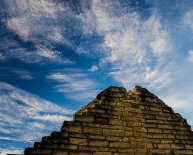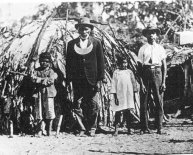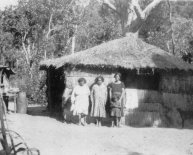
Aboriginal history of Australia
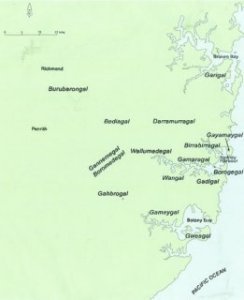 “The very ink with which all history is written is merely fluid prejudice.”
“The very ink with which all history is written is merely fluid prejudice.”
Mark Twain
Since the European invasion of Australia in 1788, the Aboriginal people have been oppressed into a world unnatural to their existence for thousands of years. First came the influx of the strangers who carried with them diseases, which decimated the immediate population of the Sydney tribes. It is estimated that over 750, 000 Aboriginal people inhabited the island continent in 1788. The colonists were led to believe that the land was terra nullius (‘no one’s land’), which Lt James Cook declared Australia to be in 1770 during his voyage around the coast of Australia.
“… they were so ignorant they thought there was only one race on the earth and that was the white race. So when Captain Cook first came, when Lieutenant James Cook first set foot on Wangal land over at Kundul which is now called Kurnell, he said oh lets put a flag up somewhere, because these people are illiterate, they’ve got no fences. They didn’t understand that we didn’t need fences … that we stayed here for six to eight weeks, then moved somewhere else where there was plenty of tucker and bush medicine and we kept moving and then come back in twelve months’ time when the food was all refreshed …”1
the late Aunty Beryl Timbery Beller
It would not be an exaggeration to claim that the Island continent was owned by over 400 different nations at the time of this claim by Cook. When the first fleet arrived in Sydney Cove it is said that Captain Philip was astounded with the theory of Cook’s terra nullius, saying “Sailing up into Sydney cove we could see natives lining the shore shaking spears and yelling.”
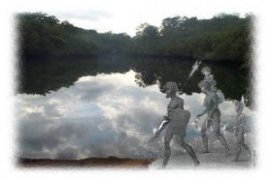 The Occupants of the Land
The Occupants of the Land
For thousands of years prior to the arrival of Europeans, northern Sydney was occupied by different Aboriginal clans. Living primarily along the foreshores of the harbour, they fished and hunted in the waters and hinterlands of the area, and harvested food from the surrounding bush. Self-sufficient and harmonious, they had no need to travel far from their lands, since the resources about them were so abundant, and trade with other tribal groups was well established. Moving throughout their country in accordance with the seasons, people only needed to spend about 4-5 hours per day working to ensure their survival. With such a large amount of leisure time available, they developed a rich and complex ritual life – language, customs, spirituality and the law – the heart of which was connection to the land.
European Discovery and Arrival
The arrival of Lt James Cook in 1770 marked the beginning of the end for this ancient way of life. Cook’s voyage of exploration had sailed under instructions to take possession of the Southern Continent if it was uninhabited, or with the consent of the natives if it was occupied. Either way, it was to be taken. Upon his arrival, Lt Cook declared the land he called New South Wales to be the property of Britain’s King George III, and ignored the inconvenient fact that the land was already well populated. His failure to even attempt to gain the consent of the natives began the legal fiction that Australia was waste and unoccupied.
Cook was followed soon enough by the arrival of the First Fleet, in January of 1788, under the command of Captain Arthur Phillip, whose mission was to establish a penal colony and take control of Terra Australia for settlement.
We found the natives tolerably numerous as we advanced up the river, and even at the harbour’s mouth we had reason to conclude the country more populous than Mr Cook thought it. For on the Supply’s arrival in the [Botany] bay on the 18th of the month they assembled on the beach of the south shore to the number of not less than forty persons, shouting and making many uncouth signs and gestures. This appearance whetted curiosity to its utmost, but as prudence forbade a few people to venture wantonly among so great a number, and a party of only six men was observed on the north shore, the governor immediately proceeded to land on that side in order to take possession of this new territory and bring about an intercourse between its new and old masters.
Watkin Tench, January 1788
The first act of land ownership by Europeans came within four days of arrival when a group of men from the HMS Sirius went ashore to clear land to gain access to fresh water. By 26 January, the First Fleet had found its way to Sydney Cove and landed there on the harbour.

